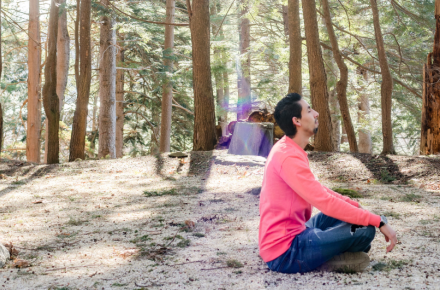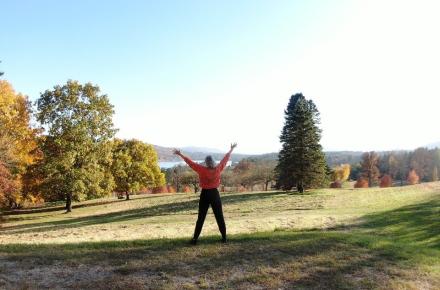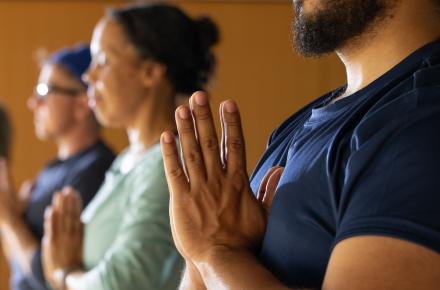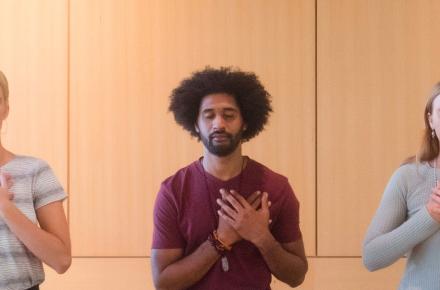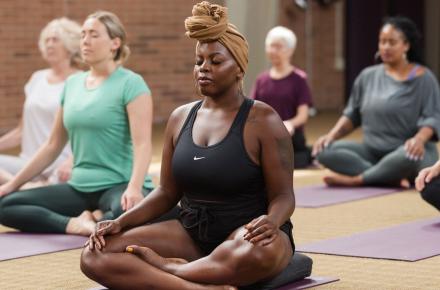A Wandering Swami: An Excerpt from a New History of Swami Kripalu

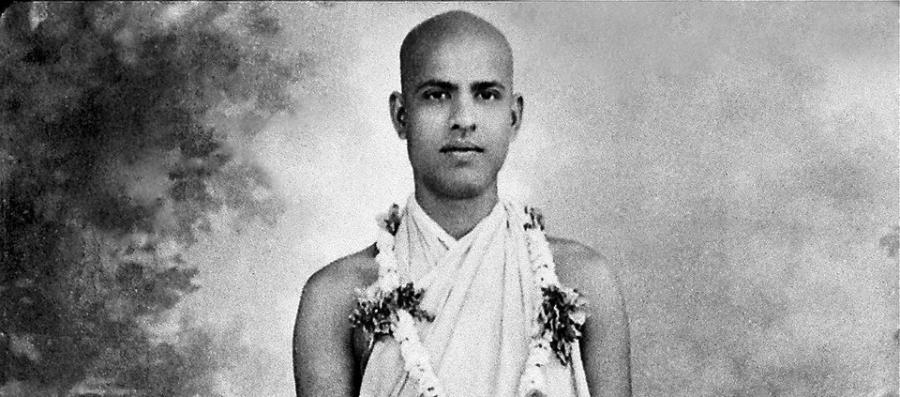
In his new book Dharma Then Moksha: The Untold Story of Swami Kripalu, Richard Faulds (Shobhan) draws upon Swami Kripalu’s legacy of written works and transcribed talks to recount his rise from the depths of poverty and despair to the heights of public renown and self-realization. In this excerpt, Swami Kripalu begins his life as a renunciate monk.
***
Swami Kripalu’s wandering soon brought him to the ashram of Swami Shantananda, a Sanskrit scholar and yogi who lived on the banks of the Narmada near the village of Indore-Vasna. Impressed by Shantananda’s bright countenance and straightforward manner, Swami Kripalu asked to be ordained as a swami. Shantananda declined the request but invited him to stay in the ashram for a while. After only five days, Shantananda was able to discern Swami Kripalu’s spiritual readiness and agreed to initiate him into the Udasin branch of the swami order. It was Shantanada who gave him the name Kripalvananda, often shortened to Kripalu, which means grace or compassion. The novice Swami Kripalu took leave of the ashram and began traveling on foot from village to village, carrying only a water pot and change of clothes.

Swami Kripalu Recalls His First Meal as a Swami
With [my] initiation, I vowed to be detached from everything: my relatives, home, town, everything. I left the ashram the next day to wander. I now had to beg for food and be prepared to sleep under a tree wherever my feet stopped for the day. I had never asked for alms before and was hesitant. How can I beg for food? I asked myself. I felt helpless.
I walked three or four miles and came to a small town. There was a temple there and I went in, bowed to the altar, and sat in the corner of the temple. It was exactly 12 o’clock. I wasn’t particularly hungry and thought to myself, Maybe I’ll go for two or three days before I ask for food. I can make it that long. But I’ll certainly have to ask for alms after four or five days. As I sat in the corner of the temple, I noticed there was a second temple behind it, where a mother and son appeared to be living. I could see they did the pujas (a ritual of devotional worship) in both temples.
“Mother,” I heard the boy say, “Yesterday, aunty promised that she would join us for our noon meal, but she’s not coming now. What are we going to do with this extra food?”
“Don’t worry about it,” the mother said. “Go and finish your puja.” The boy walked into the temple where I was sitting and he finished his puja with great devotion. Then he saw me and hurried back to his mother.
“Mother,” he said. “There’s a swami sitting in the temple.”
“My son,” the mother said. “This extra food that we prepared today is for him. Go and tell him not to seek alms anywhere else.”
The son quickly came to me and bowed down. “Please come to our home for your noon meal,” he said sweetly.
I followed the boy into the other temple. The mother was standing on its steps with a bucket of water. She washed my feet and her son wiped them with a clean cloth before taking me inside. She lit incense and asked me to sit on a wooden platform. She served my meal with love and devotion, doting on me like I was her own son. Both mother and son fanned me while I ate. I was greatly moved.
This was my first meal as a swami and I felt that God was already taking care of me. Tears rolled down my face when I left. I knew then that the Lord is the well-wisher of everyone and I would never, ever, have to worry about myself.
The Vocation of a Swami
Swami Kripalu delighted in his new vocation and newfound freedom. Walking from place to place, he encountered solitary swamis intent on helping travelers in need. He also met swamis living together in ashrams that served as spiritual centers where villagers gathered to share meals, sing devotional songs, and hear discourses. Instead of relating as beggars and almsgivers, Swami Kripalu discovered a rich interdependence existing between the swamis and villagers.
Seeing the positive role a swami could play in the life of a community, Swami Kripalu dedicated himself to living among the people and serving their practical needs. He also dedicated time to his yoga practice. I found it interesting that his focus was not on any of the physical or mental disciplines equated with yoga in the West. Instead, he brought his attention to bear upon yama and niyama, the first two stages of Patanjali’s eight-limbed path. Yama means “restraint,” and specifies five conducts to avoid: nonviolence, non-lying, non-stealing, non-indulgence, and nonattachment. Niyama means observance and specifies five qualities to cultivate: purity, contentment, austerity, self-study, and surrender to the divine.
Swami Kripalu observed yama and niyama as part of a larger practice that he called character building. While serving the villagers during the day, Swami Kripalu watched his thoughts and actions carefully. Every evening before going to bed, he used these interactions as a mirror in which he could see his character reflected back to him. Contrasting his conduct with the high ideals of yama and niyama, he strove to become a person of genuine goodwill and virtue.
Swami Kripalu’s Reflections on Character Building
I have learned the science of character building from the scriptures, the biographies of great masters, the company of saints, and from my own experiences. Its principles are the very treasure of my life, which I freely dispense to others wanting to mend their lives. The primary principle is that bad character traits can be eradicated by strengthening good character traits. By applying this single principle, a person can formulate the best possible personality.
It is impossible to not make mistakes in life. Difficult situations arise and, knowingly or unknowingly, we all take missteps. We don’t realize that these mountains of mistakes are where the springs of self-knowledge can begin to flow. Whenever I behave improperly during the day and am not able to see my error, the mistake will come looking for me during my evening introspection and say, “This is where you were at fault.” Whenever such a mistake appears to me so clearly, I consider it a wonderful grace, as it helps me not make the same mistake again.
Anyone who personifies an enormous power of purposeful determination and excels in their chosen field is by necessity wedded to self-observation and virtues such as healthy eating, regular exercise, contemplative study, and the character-building principles that yoga calls yama and niyama. Master these virtues and you will also be successful.
















